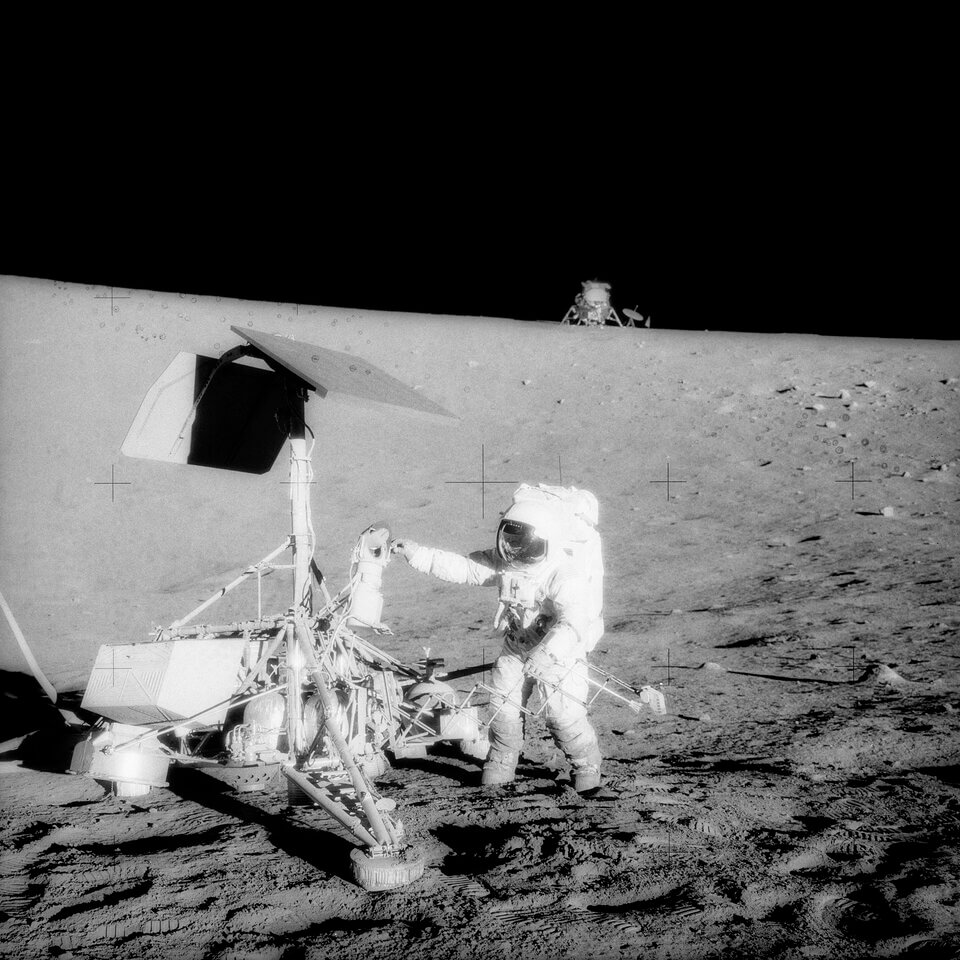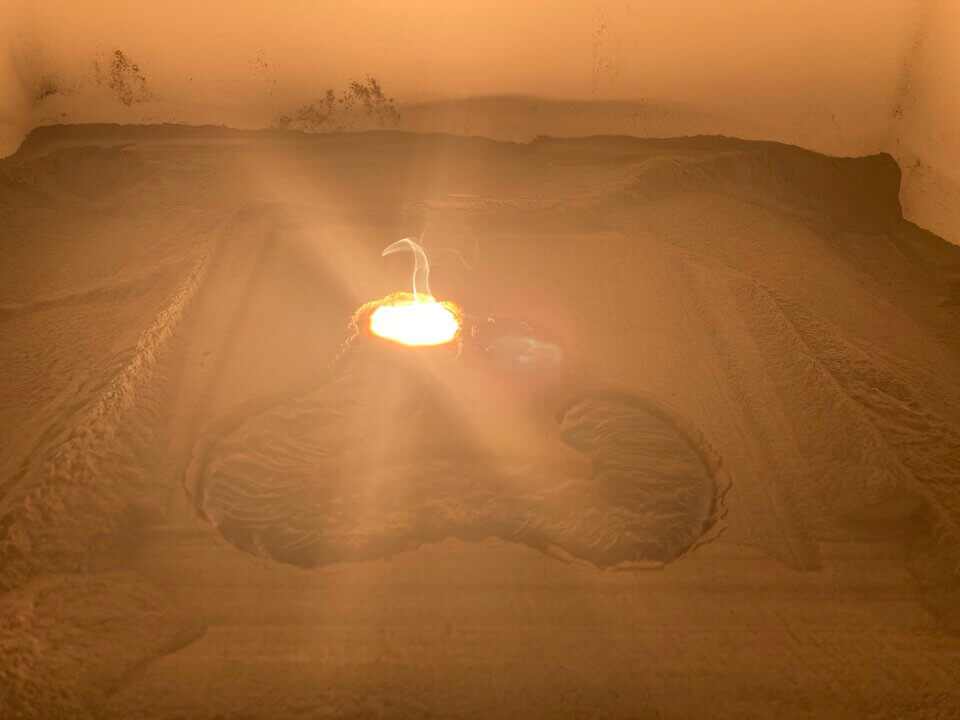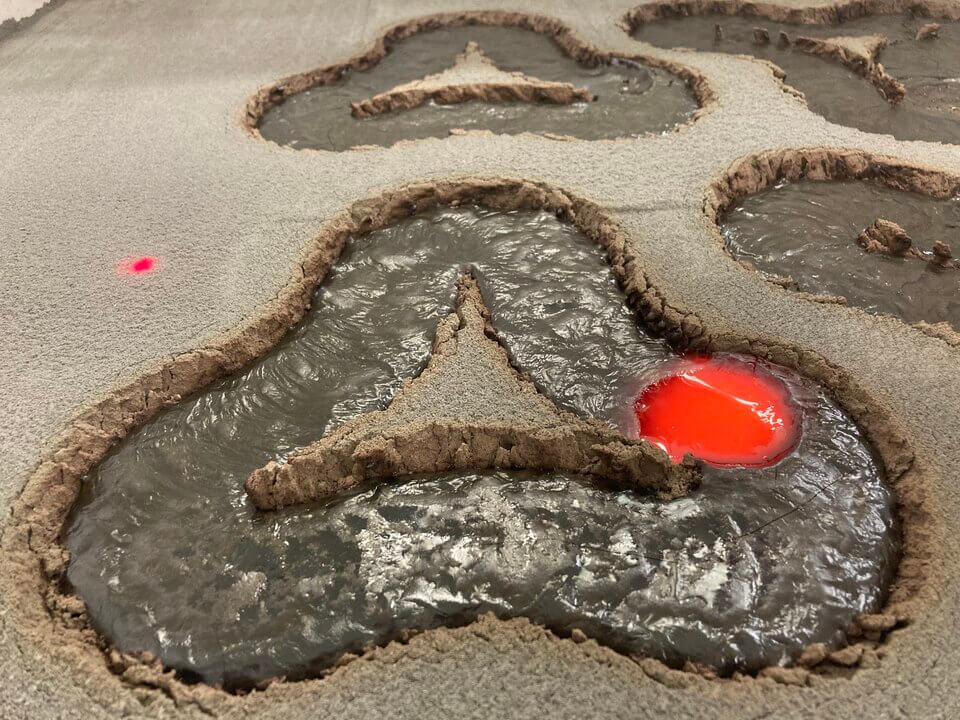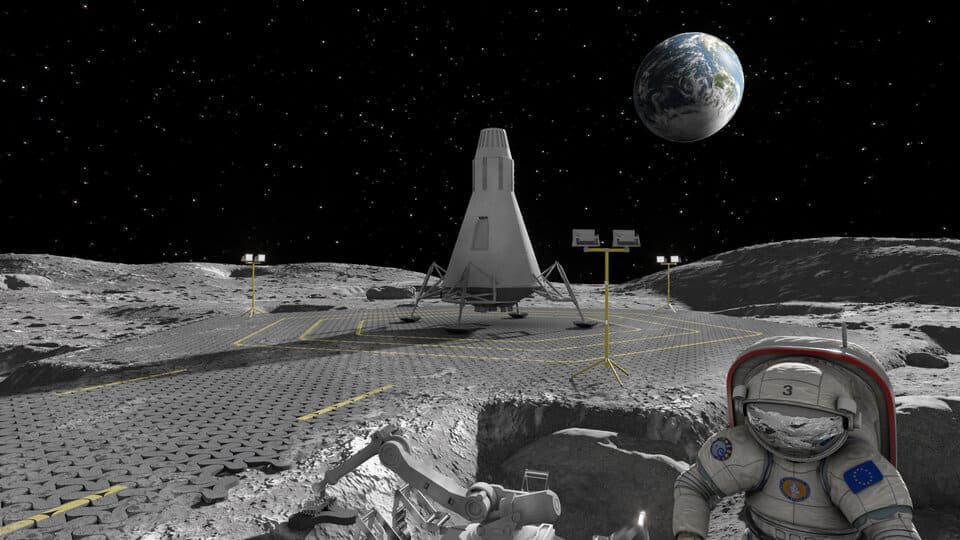With the development of civilization comes roads, and this will be especially true on the moon. To do this, the dust must be kept away. In the Apollo era, dust blocked equipment and worn space suits.
When the astronauts return before the moon, they will probably drive more than walk - but to keep flying moon dust away they will need roads. A European Space Agency ESA project reported in Nature Scientific Reports tested the possibility of creating roadworthy surfaces by melting simulated moon dust using a powerful laser.

With the development of civilization comes roads, and this will be especially true on the moon, you just need to keep the dust away first. Moon dust is extremely fine, abrasive and sticky. In the Apollo era, dust blocked equipment and worn space suits.

The Survivor 3 lander was swept up in dust when the Apollo 12 lunar module landed about 180 meters away. Current NASA models indicate that when lunar landers land, their engine jets can move tons of dust, which could stick to the lander's surfaces and cover the entire area around a landing.
The most practical response is to keep dust away by paving activity areas on the moon, including roads and landing pads. The idea of melting sand to create roads was first proposed to Earth, back in 1933.
ESA's PAVER project - Paving the way for a large area sinter of Regolith - investigated the feasibility of the same approach to paving roads on the Moon, led by the BAM Institute for Materials Research in Germany together with the Aalen University in Germany, the LIQUIFER Systems Group in Austria and Germany and the Klausthal University of Technology in Germany, with the support of the Institute for Materials Physics in Space of the German space agency DLR.
The consortium used a 12-kilowatt carbon dioxide laser to melt simulated lunar dust into a glassy solid, as a way to build paved surfaces on the moon's surface.

As ESA's materials engineer, Advonite Makaya, explains, the project actually goes back to the original concept from 1933: "In practice, we will not bring a carbon dioxide laser to the moon. Instead, the current laser is used as a light source for our experiments, to replace lunar sunlight that can be focused using a Fresnel lens several meters in diameter to produce parallel melting on the lunar surface.
"In previous on-site resource utilization projects - including building bricks using solar heat concentrated in mirrors - we looked at surface melting limited to relatively small melting points, from a few millimeters to several centimeters in diameter. To build roads or airstrips, a much wider focal point is required, to scan a very wide area in a practical amount of time."

In facilities installed at the Klausthal University of Technology, the consortium achieved a focus point of 5-10 cm.
Through trial and error, they developed a strategy to use a 4.5 cm laser beam to create hollow-centered geometric shapes about 20 cm in diameter that could be joined together to form large solid surfaces that could be used as roads or runways.
Advonite adds: "It turned out that it was actually easier to work with regolith at a larger focal point, because on a scale of millimeters, heating creates molten spheres whose surface tension makes it difficult for them to aggregate to the surface. A wider beam produces a stable layer of molten regolith that is easier to control.
"The resulting material is glassy and brittle, but it will mainly be under downward compressive forces. Even if it breaks, we can continue to use it, and repair it as needed."
A single melting layer is about 1.8 cm deep

The team found that reheating a cooled paved road could cause it to crack, so they switched to geometries that included minimal crossings. A single melting layer is about 1.8 cm deep; Built buildings and roads may consist of several layers, depending on the required load forces.
Jens Ginster, head of the multi-material manufacturing process department at BAM, explains: "Such a high melting depth to create massive structures can only be achieved by large laser spots."
The team estimates that a landing pad of 100 square meters with a thickness of 2 cm of fastened material can be built in 115 days.
This project originated from a call for ideas from the Discovery Foundation in ESA's Fundamental Activities through the Open Innovation Platform OSIP. The calling voice asked for research ideas related to extraterrestrial manufacturing and construction.
The call was answered no less than 69 times. Of these, 23 ideas were implemented - based on an assessment carried out by a panel of ESA experts, who scored the ideas according to their innovation.
"This initial call was an effective investment from our point of view", notes Adventit, "it opened up many promising research paths to follow".
The project is part of ESA's Terrae Novae exploration program, leading the European manned mission to the Solar System, with targets in low orbit around Earth, the Moon and Mars.

5 תגובות
Aviv, you updated us. I would appreciate it if you could direct me to academic sources. 🙂
On occasion, check what kind of cheese the soil of the moon is made of
Not by AI but by the European Space Agency.
What a ridiculous article, seems to be written by AI
Nonsense in tomato juice no one has reached space the higher you go towards the atmosphere the heat rises thousands of degrees and no substance on earth is able to withstand a tenth of the heat without turning into a liquid.
The era of the collapse of conceptions has arrived
From the collapse of Netanyahu's security concept
To the collapse of Newton's scientific conception
When the guns roar the muses are silent.
This article is intended for discussion starting at 6 o'clock after the war.
The idea of gravity was given to the world by Newton 330 years ago.
Newton believed that there was a mysterious and wonderful force emanating from the depths of the earth, and that its whole function was to knock down objects that fell from our hands. Such a mysterious power brings the reader to the world of fairy tales, and the imagination gives this power the image of a friendly, invisible demon.
Newton gave this demon the soothing name "gravitational force".
Amazingly, Newton swept away many believers in the idea of gravity, and so began a strange scientific investigation of physical reality, with the physics of demons and spirits.
Why did Newton invent the delusional idea of gravity.
Newton did not know that objects that were handed out of our hands fall by themselves, and thus they fulfill a wonderful physical law of nature, which is the law of conservation of energy. This law of conservation was accepted in science only 170 years ago, and Newton obviously did not know about its existence.
And since Newton did not know that objects fall by themselves, and did not know about the existence of the law of conservation of energy, he invented the idea of gravity. This crazy idea lasted 160 years in all official physics curricula, creating a scientific quagmire
Thick and cloudy, which prevented any possibility of getting to know the true structure of the universe.
Newton's murky scientific quagmire was canceled out by physical reality that revealed to the world the existence of a miraculous quantitative law, which is the conservation of energy.
How the law of conservation of energy, eliminates the concept of gravity.
To lift a large stone off the ground to a height of 1 meter, you have to exert yourself and get tired, and this amount of fatigue represents an amount of energy.
If we release this stone from a height of 1 meter, it will fall down by itself with increasing speed, and its impact will hit the ground. Show exactly the same amount of energy that was needed to lift the stone to a height of 1 meter.
Physical reality is miraculous and works by itself, and it is she who taught scientists about the existence of an important physical law of nature - the law of conservation of energy.
There are many types of energy, and they can replace each other, according to the law of conservation of quantity. Physical reality works by itself, according to miraculous laws inherent in it, and curious researchers of physical reality began to discover these laws.
The law of conservation of energy that was discovered 170 years ago completely cancels out Newton's physics that requires gravity - and it proves that objects that are separated from our hands - fall by themselves, and there is no mysterious demon in physical reality that knocks them down..
And what turns out? For 170 years, Newton's physics has been taught in universities, and not a single teacher stood up and shouted "there is no gravity, and Newton's physics is incorrect"
It should be emphasized that Newton did not know that his physics was incorrect, but already 170 years ago, the physics teachers knew about the existence of the law of conservation of energy which eliminates the idea of gravity, but they were afraid of the believers in the idea of gravity, and did not tell this to their students.
These 170 miserable years of fear produced terrible errors in the concept of matter and the structure of the universe, and the concepts of dark particle matter and dark energy testify to this.
Now the era of the collapse of concepts has arrived, and it is time to move to a different physics, based on miraculous laws inherent in physical reality. This is the real physics, and it appears in a revolutionary book - which bears the name - "Esbar's magical journey on the wings of natural knowledge"
This book conflicts with all the physical teachings developed in the last 150 years, and it presents to the world a new physics, and also a new geometry of circles.
In the new physics, matter is continuous and has no gravity, and the stars of the universe move in spiral orbits in space filled with passive time.
Passive time is a new type of time that exists right in physical reality, when the time we all know exists only in the human mind, and it disappears the moment you think about it.
Therefore the proper name for it is active time.
A. Asbar